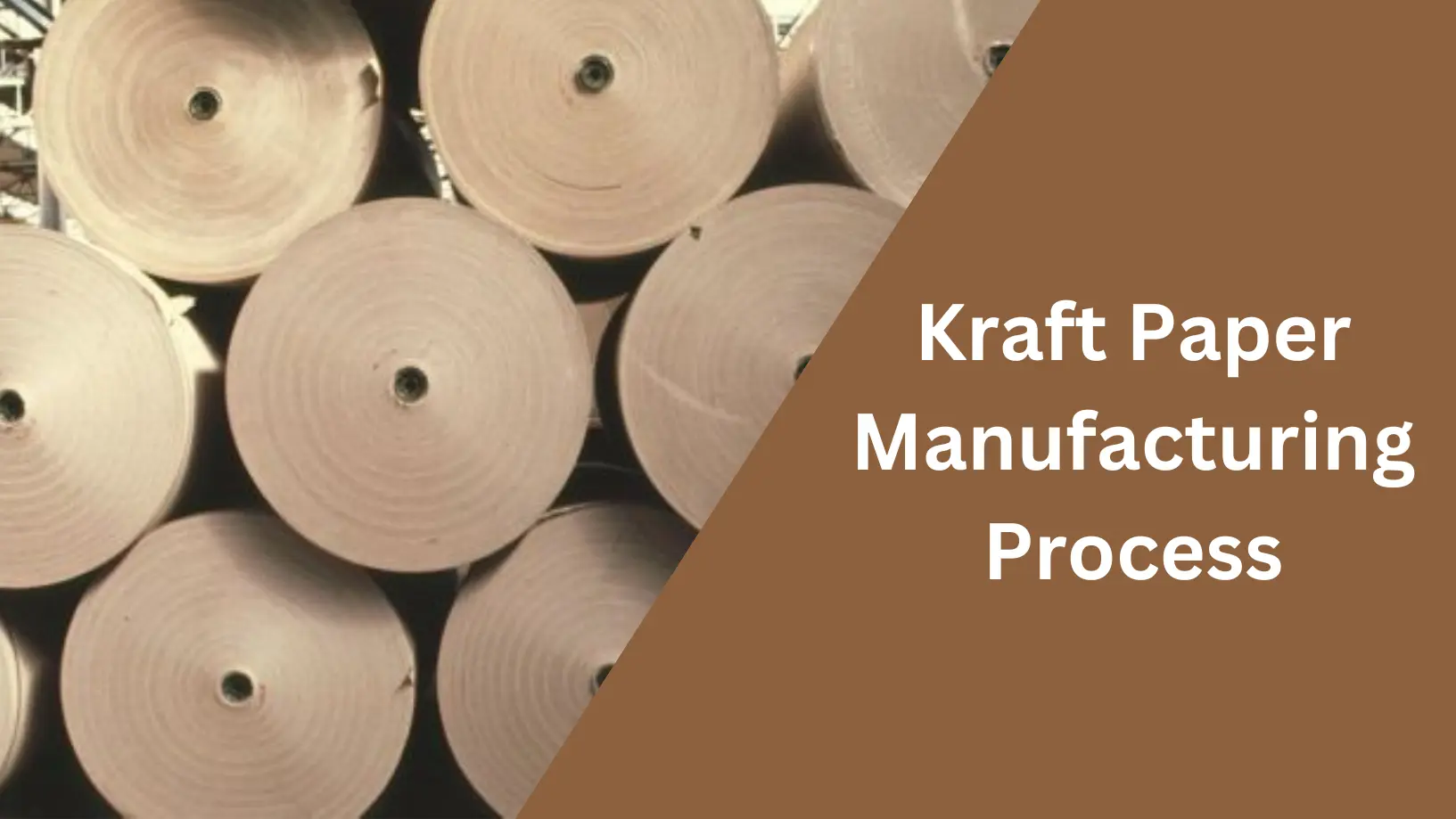Introduction
Renowned for its strength, versatility, and eco-friendliness, Kraft paper stands as a cornerstone in various industries, from packaging to arts and crafts.
As consumers increasingly prioritize sustainability and seek alternatives to traditional packaging materials, the demand for Kraft paper continues to surge. Understanding the manufacturing process not only sheds light on the remarkable qualities of Kraft paper but also underscores its significance in the realm of sustainable packaging solutions.
From the sourcing of raw materials to the final stages of production, each step in the Kraft paper manufacturing process contributes to its distinctive properties and performance. By unraveling the intricacies of this process, we aim to provide you with a deeper appreciation for the craftsmanship and innovation driving the Kraft paper industry forward.
What is Kraft Paper?
Kraft paper stands out for its durability, being predominantly machine-made from wood pulp. Unlike other paper types, kraft paper can utilize various wood and non-wood sources for production, including resinous pine, bamboo, and agricultural residues.
Renowned for its thickness and strength, kraft paper exhibits a coarse texture and high tear resistance, owing to its highly oriented fibers. Its applications in packaging are diverse and widespread due to these characteristics. Kraft wrapping paper, being lightweight, helps minimize shipping costs while providing superior protection compared to many other packing materials, thanks to its durability and flexibility.
Kraft paper can be found in different forms, including unbleached variants commonly used as wrappers or packaging materials. Manufacturers can produce kraft paper with watermarks, stripes, or calendared finishes, and it is also printable.
Brown kraft paper typically originates from unbleached kraft pulp, while white kraft paper is usually made from bleached kraft pulp. However, since bleaching tends to weaken paper, kraft papermakers often prioritize producing their strongest products in the natural brown color.
Use of Kraft Paper?
Various kraft paper products serve different purposes globally, including:
- Paper sacks for industrial materials like cement and chemicals
- Flour and food bags in grocery stores
- Multiwall sacks
- Envelopes
- Paper bags
- Corrugated layered cardboard
How Do Kraft Papers Are Manufactured?
The detailed process of manufacturing kraft paper includes the raw material used in it, chipping, cooking, pulping, screening, blowing, washing, and bleaching. Let’s have a step-by-step look at each process of manufacturing kraft paper.
Raw Materials for Kraft Paper Production:
Fibers:
Both softwood and hardwood are utilized in the manufacturing of kraft paper. Additionally, kraft paper production can incorporate non-wood agro-residues and waste paper.
Chemicals:
The chemicals essential for pulp cooking, known as “white liquor,” play a crucial role. This mixture contains active components such as NaOH (sodium hydroxide) and Na2S (sodium sulfide), which are employed in cooking wood chips within the digester for pulp production. While there’s no fixed ratio for these chemicals, typically a sulfidity range of 25% to 35% is maintained. Lower sulfidity levels, particularly below 15%, can adversely affect the reaction rate and the quality of the resulting pulp products.
Kraft Pulping Process:
The kraft process also referred to as “Kraft Pulping” or the “Sulfate Process,” transforms wood into wood pulp, the primary ingredient in paper production.
The wood logs are processed through the chipper to cut small chips of the wood. Wood chips undergo treatment with a hot solution comprising water, sodium hydroxide (NaOH), and sodium sulfide (Na2S) within large pressure vessels known as digesters.
These vessels, capable of holding 10-20 tons of pulp, operate through two main processing methods: batch and continuous. This chemical solution effectively breaks down the bonds between lignin, hemicellulose, and cellulose. Notably, approximately 90% of the pulping chemicals can be recovered and reused economically, rendering the kraft pulping process highly sustainable and cost-effective.
The step-by-step process is as below:
Wood Chip Preparation
- Size and Thickness: Common wood chips used in pulp production range from 12 to 25 mm in length and 2 to 10 mm in thickness.
- Pre-steaming: Wood chips are initially subjected to pre-steaming, where they are wetted and preheated with steam, causing partial expulsion of air from the cavities within the chips.
- Impregnation with Liquor: Chips are saturated with a mixture of black and white liquor, promoting chemical reactions with the wood’s capillary structure, crucial for achieving a homogeneous cook and minimizing rejects. source
- Temperature Control: Impregnation typically occurs below 100 °C (212 °F) to prevent excessive heating.
- Alkali Consumption: Approximately 40–60% of alkali consumption in the continuous process happens during impregnation.
Cooking Process
- Digesters Operation: Wood chips undergo cooking in pressurized digesters, either in a batch or continuous manner, with some facilities producing over 1,000 tonnes of pulp per day.
- Delignification: Cooking at temperatures around 170 to 176 °C (338 to 349 °F) leads to the degradation of lignin and hemicellulose, resulting in soluble fragments.
- Pulp Collection: The solid pulp, constituting about 50% of the dry wood chips’ weight, is collected and washed, yielding brown stock due to its color.
- Black Liquor Formation: The liquid byproduct, known as black liquor, contains lignin fragments, carbohydrates, and inorganic salts.
Recovery and Chemical Processes
- Black Liquor Concentration: Excess black liquor undergoes concentration in multiple-effect evaporators to recover valuable chemicals and byproducts like tall oil.
- Recovery Boiler Operation: Concentrated black liquor is burned in a recovery boiler to generate high-pressure steam and recover inorganic chemicals for reuse.
- Recycling Process: The re-causticizing process involves regenerating sodium hydroxide from sodium carbonate through a series of reactions, ensuring efficient chemical usage.
- Energy Generation: The recovery boiler’s steam generation provides energy for the mill’s operations and often surplus electricity for external use or sale.
- Innovations: Ongoing efforts explore more efficient recovery processes, such as black liquor gasification, to optimize chemical recovery.
Blowing and Screening
- Blowing to Collection Tank: Cooked wood chips are blown to a collection tank at atmospheric pressure, releasing steam and volatile compounds.
- Screening Process: Pulp undergoes screening to separate it from impurities like shives, knots, and dirt, with the accept flow containing the pulp and the reject stream containing separated materials.
- Refining or Reprocessing: Shives and knots separated from the pulp may undergo further refinement or be recycled back into the digester for processing.
Washing and Bleaching
- Washing Stages: Brownstock from the blowing stage undergoes washing to remove cooking liquors, with multiple stages employed to ensure thorough removal.
- Types of Washing Equipment: Various washing equipment, such as pressure diffusers, vacuum drum washers, and wash presses, facilitate efficient pulp washing.
- Bleaching Stages: After washing, the pulp undergoes bleaching processes to further remove residual lignin, enhancing brightness and purity as needed for specific paper products.
Recycling of the kraft paper
The recycling process of kraft paper involves several key steps aimed at efficiently transforming used kraft paper into new paper products. While specific procedures may vary depending on the recycling facility and company, the general process typically follows these three main steps:
Step 1: Sorting & Collection
The initial phase focuses on sorting and collecting the used kraft paper. This entails identifying where the kraft paper waste is generated within the facility and determining its composition. For instance, kraft paper sacks may contain additional materials such as poly-liners, wax coatings, or additives to enhance oil resistance and wet strength.
Step 2: Baling & Shipping
Once the sorting process is complete and the kraft paper is collected, some facilities opt to bale the material to facilitate transportation and reduce shipping costs. Baling compresses the kraft paper into compact, stackable units, eliminating unnecessary airspace during transportation. This not only reduces shipping expenses but also optimizes storage space at recycling centers.
Step 3: Milling
The baled kraft paper is then transported to a mill, where it undergoes various stages of processing to be transformed into pulp, the raw material for new paper products. The milling process typically involves the following steps:
- Pulping
- Cleaning
- Screening
- Deinking
- Thickening
- Dispersion and Kneading
- Bleaching
- Refining
- Water Treatment
- Solid Waste Handling
Once the milling process is complete, the recycled kraft pulp is ready to be used as feedstock for manufacturing new paper products. These products may include kraft paper, cardboard, packaging materials, or other paper-based items. Alternatively, recycled kraft material can be repurposed for applications such as animal bedding or composting. Overall, the recycling process ensures that kraft paper waste is effectively diverted from landfills and contributes to the conservation of natural resources.
Type and Application of Kraft Paper
Here are several varieties of kraft paper and their potential applications for your business:
A. UNBLEACHED KRAFT PAPERS
1. Virgin Natural Kraft Paper
- Known for its cleanliness, durability, and affordability, virgin natural kraft paper is primarily utilized in heavy-duty scenarios where high tear resistance and bursting strength are essential. It is also printable, making it suitable for branding and protective purposes. This type of paper may contain up to 5% recycled materials.
- Applications: Wrapping, book covers, paint masking, stationery, and pallet interleaving.
2. Recycled Kraft Paper
- While not as strong as virgin kraft, recycled kraft paper offers an eco-friendly alternative at a lower cost. It has slightly lower tear and bursting strength compared to natural kraft but remains economical and advantageous.
- Applications: Bundling, garment underlay, internal carton packaging, dust covers, and paint masking.
3. Black Kraft Paper
- Renowned for its deep color, black kraft paper is favored in various crafting applications and is commonly used as backing for photo frames.
- Applications: Craft projects, artistic endeavors, and decorative purposes.
4. Colored Kraft Paper
- A popular choice among crafters, colored kraft paper finds use in elementary school supplies, scrapbooking, and bulletin boards.
- Applications: Crafting activities and educational materials.
5. Printed Kraft Paper
- Custom-printed kraft paper offers versatility and is extensively used in branding, packaging, and in-store displays across multiple industries.
- Applications: Branded wrapping, packaging, and promotional materials.
6. Steel Interleaving Kraft Paper
- Integral to the stainless-steel milling process, steel interleaving kraft paper provides the steel with its characteristic shine.
- Applications: Cold-rolling for stainless steel production.
7. Absorbent Kraft Paper
- Designed for applications requiring moisture resistance, absorbent kraft paper features high wet strength and porosity, making it suitable for various industries.
- Applications: Building construction, furniture packaging, and filter media.
8. Spinning Kraft Paper
- Flexible enough for weaving, spinning kraft paper finds utility in wicker furniture, cloth making, and rugs.
- Applications: Textile industry and crafting.
9. Electrotechnical Kraft Paper
- Non-conductive by design, electrotechnical kraft paper is indispensable for insulating cables and electrical components.
- Applications: Electrical insulation and component manufacturing.
10. Super Calendared Kraft Paper / Release Base Paper
- This dense paper, capable of holding silicone coatings, is employed where label-release properties are required.
- Applications: Label manufacturing and packaging.
11. Sack Kraft Paper
- Offering a balance between strength and porosity, sack kraft paper is ideal for packaging commodities requiring durability.
- Applications: Sack production for cement, powdered materials, and food products.
12. Foaming Kraft Paper
- Designed for smooth release in foaming applications, foaming kraft paper is utilized in industries utilizing polyester and polyether foams.
- Applications: Polyurethane industry and foam production.
B. BLEACHED KRAFT PAPERS
Paper Grades for Bleached Kraft Paper:
- Machine Glazed (MG)
- Smooth Finished (SF)
- Machine Finished (MF)
- Clay Coated Kraft (CCK)
Applications of Bleached Kraft Paper:
- Shopping/Retail Bags
- Folding Boxes
- Laminated Kraft Paper
- Hygiene Release Liners
- Medical Grade Kraft Paper
- Paper Sacks
Each type of kraft paper offers unique characteristics suited to various business needs, providing a wide range of options for packaging, crafting, and industrial applications.


